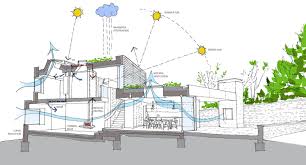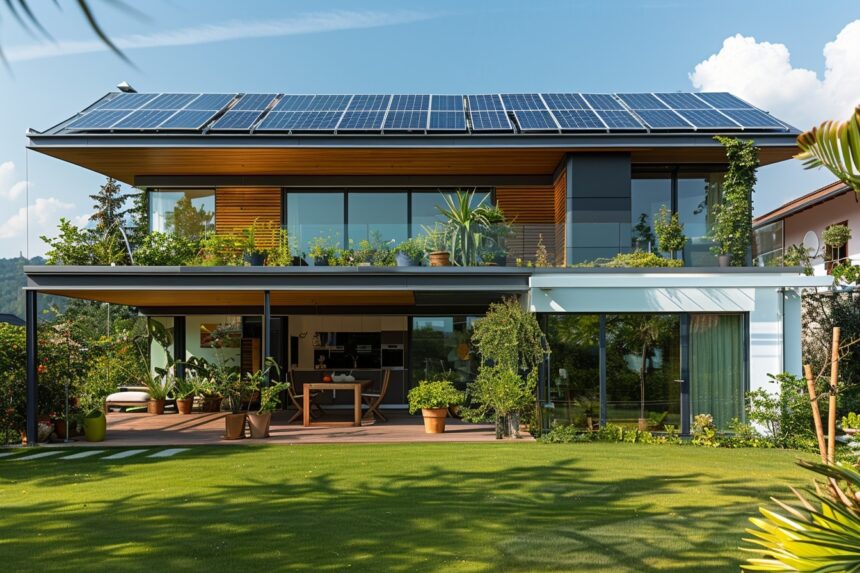In today’s world, more and more people are becoming aware of the need to protect our planet. One of the most impactful ways to contribute to sustainability is through sustainable home design. As eco-consciousness rises, the real estate industry has responded with innovative approaches to building homes that not only benefit the environment but also promote a healthier lifestyle. This article explores the latest eco-friendly trends in home design, focusing on how they are transforming the real estate landscape.
What is Sustainable Home Design?
Sustainable home design focuses on creating living spaces that reduce environmental impact while offering comfortable, practical living solutions. This approach prioritizes energy efficiency, resource conservation, and the use of renewable materials. Sustainable design seeks to integrate eco-friendly technologies and materials that contribute to long-term environmental benefits without compromising on quality or aesthetics. From solar-powered energy systems to green building materials, sustainable home design is transforming how homes are built and lived in.
Sustainability in home design isn’t just about using eco-friendly materials—it’s also about creating a space that is energy-efficient, water-conserving, and healthy for its inhabitants. With growing awareness around climate change, sustainable homes are no longer a niche trend but a mainstream movement that is gaining momentum. Homebuyers are increasingly seeking properties that not only provide a high level of comfort but also align with their values concerning environmental responsibility.
Energy-Efficient Homes: Leading the Charge
One of the key pillars of sustainable home design is energy efficiency. This includes using advanced insulation materials, high-performance windows, and energy-efficient appliances to reduce a home’s overall energy consumption. Solar panels are also increasingly common, allowing homeowners to generate their own electricity, reduce their reliance on non-renewable energy sources, and lower utility bills.
The integration of smart home technologies further enhances energy efficiency by enabling homeowners to monitor and control their energy usage in real-time. Smart thermostats, lighting systems, and appliances help optimize energy consumption by adjusting automatically based on the household’s needs. These systems contribute to a more sustainable lifestyle while also providing significant cost savings in the long term.
Green Building Materials: A Sustainable Foundation
Building materials play a significant role in the sustainability of a home. The use of eco-friendly materials such as reclaimed wood, bamboo, and recycled steel not only helps preserve natural resources but also reduces waste. These materials have a lower environmental impact during production and transportation, making them a sustainable choice for construction.
In addition to recycled and renewable materials, many sustainable homes incorporate low-VOC (volatile organic compound) paints, finishes, and adhesives. These materials improve indoor air quality by reducing harmful emissions that can negatively affect residents’ health. When combined with natural ventilation and proper insulation, these materials help create a healthier living environment while contributing to the overall sustainability of the home.
Water Conservation: Sustainable Homes That Save Water
Water conservation is another important aspect of sustainable home design. As the global population continues to grow and climate change puts stress on water resources, sustainable homes are designed to minimize water usage. This includes features like low-flow faucets, toilets, and showerheads that reduce water consumption without sacrificing performance.
Rainwater harvesting systems are also gaining popularity in sustainable homes. These systems capture rainwater, filter it, and store it for use in irrigation, flushing toilets, and even for household cleaning. This reduces reliance on municipal water systems and helps homeowners lower their water bills while promoting a more sustainable lifestyle.
Passive Design: Harnessing Natural Elements

Passive design principles are becoming increasingly popular in sustainable home design. This approach focuses on maximizing the natural elements of a site to reduce the need for artificial heating and cooling. Passive solar design, for example, uses the sun’s energy to naturally heat a home, while shading and ventilation techniques help keep it cool during hot weather.
A well-designed passive home takes advantage of the local climate, topography, and sunlight to optimize comfort without relying on energy-intensive heating or cooling systems. By focusing on the home’s orientation, insulation, and airflow, passive design reduces the overall energy consumption of a home while improving comfort levels for its occupants.
Smart Homes and Sustainable Technology
The rise of smart homes has brought innovative solutions to sustainable home design. Smart technology allows homeowners to track and control their energy usage, making it easier to implement sustainable practices in daily life. For example, automated systems can adjust lighting, heating, and cooling based on occupancy, ensuring that energy is not wasted when it is not needed.
In addition to energy-saving features, smart homes are also incorporating water conservation technologies. Leak detection systems, for instance, can alert homeowners to potential water issues before they become major problems, preventing waste and reducing water damage risks. These technological advancements contribute to the overall sustainability of the home, offering greater convenience while lowering environmental impact.
Sustainable Landscaping: A Greener Future
Sustainable home design doesn’t stop at the walls of the house—it extends to the landscaping as well. Sustainable landscaping practices focus on creating beautiful outdoor spaces that support local ecosystems while minimizing water usage and reducing maintenance. Native plants are often used in sustainable landscaping because they require less water, are resistant to pests, and thrive in the local climate.
Xeriscaping, or drought-tolerant landscaping, is another popular trend in sustainable home design. By using plants that are adapted to dry conditions, homeowners can reduce their reliance on irrigation systems and conserve water. Sustainable landscaping also involves using organic fertilizers and avoiding harmful pesticides, which helps protect the local environment and promotes biodiversity.
The Health Benefits of Sustainable Homes
Beyond environmental advantages, sustainable homes offer numerous health benefits for their occupants. By using non-toxic materials, improving indoor air quality, and incorporating natural light and ventilation, sustainable homes create healthier living environments. Studies have shown that homes built with sustainable design principles can improve sleep, reduce stress, and even boost productivity.
The emphasis on natural elements, such as indoor plants, green spaces, and natural lighting, also contributes to the well-being of residents. Sustainable homes are designed to support the physical and mental health of their occupants, creating a living space that fosters a sense of connection with nature and overall well-being.
The Future of Sustainable Home Design
As the demand for sustainable living grows, the future of sustainable home design looks incredibly promising. The integration of renewable energy sources, eco-friendly materials, and smart technologies will continue to drive innovation in the real estate sector. Additionally, as climate change and resource depletion become more pressing global concerns, sustainable home design will likely become the standard rather than the exception.
Government incentives, green building certifications, and advancements in technology will all play a role in accelerating the adoption of sustainable practices in the construction industry. Homebuyers, too, will increasingly prioritize sustainability when choosing properties, knowing that these homes offer long-term financial savings, environmental benefits, and improved health.
Conclusion: Embracing Sustainable Living
Sustainable home design is not just a passing trend; it is the future of real estate. With a focus on energy efficiency, water conservation, eco-friendly materials, and smart technologies, sustainable homes are shaping the way we live and interact with the environment. By choosing sustainable design principles, homeowners not only contribute to a healthier planet but also enjoy long-term benefits such as reduced utility costs, improved air quality, and enhanced well-being.
As we move forward, it’s clear that sustainable home design will continue to evolve, offering new opportunities to live in harmony with nature. Whether you’re building a new home or renovating an existing one, embracing sustainable design principles is one of the best ways to contribute to a more eco-conscious and prosperous future.
